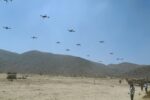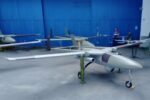Ascent AeroSystems has become the first U.S.-based drone manufacturer to achieve Cybersecurity Maturity Model Certification (CMMC) 2.0 Level 2 compliance—a significant milestone that positions the company at the forefront of secure unmanned aerial vehicle (UAV) manufacturing for defense and government applications. This certification underscores growing cybersecurity expectations across the defense industrial base and reflects increasing scrutiny on supply chain integrity in tactical drone systems.
CMMC 2.0: A Critical Threshold for Defense-Grade Cybersecurity
The Department of Defense (DoD) introduced CMMC as a unified standard to ensure that contractors handling Controlled Unclassified Information (CUI) meet baseline cybersecurity requirements. The updated CMMC 2.0 framework streamlines the original model into three tiers—Foundational (Level 1), Advanced (Level 2), and Expert (Level 3)—with Level 2 aligning closely with NIST SP 800-171 controls.
By attaining Level 2 certification through an accredited third-party assessment organization (C3PAO), Ascent AeroSystems demonstrates its ability to securely handle sensitive DoD-related information across its engineering, manufacturing, and support operations. This is especially relevant as UAVs increasingly integrate into mission-critical ISR and logistics roles within contested environments where data integrity is paramount.
Implications for Tactical Drone Programs and Blue UAS Compliance
Ascent’s achievement directly supports its participation in key Pentagon initiatives such as the Defense Innovation Unit’s (DIU) Blue UAS program—a framework that pre-approves drones for federal use based on security vetting and NDAA Section 848 compliance regarding Chinese components.
The company’s flagship coaxial rotor platforms—Spirit and NX30—are already approved under Blue UAS Cleared List protocols and are designed for modular payload integration across ISR, comms relay, resupply, and perimeter security missions. With CMMC certification now in place, these systems gain enhanced credibility for deployment in sensitive operational theaters where cyber risk mitigation is non-negotiable.
- Spirit: Ruggedized coaxial UAV with IP56 rating; optimized for austere field conditions
- NX30: Larger coaxial platform supporting heavier payloads; suitable for ISR or logistics roles
Supply Chain Security Amid Growing Legislative Pressure
The move toward secure-by-design UAV systems comes amid bipartisan legislative momentum to decouple critical technologies from adversarial suppliers—particularly those linked to China’s DJI or other entities flagged under NDAA provisions or FCC bans.
Congressional efforts such as the American Security Drone Act aim to prohibit federal procurement of drones containing components from foreign adversaries unless exceptions are granted by national security authorities. In this context, Ascent’s domestic sourcing strategy—combined with its vertically integrated manufacturing model in Massachusetts—positions it favorably among defense primes seeking trusted small-UAS subcontractors.
A Model for Cyber-Resilient Defense Tech SMEs
While major primes like Lockheed Martin or Northrop Grumman maintain robust cyber programs by default, achieving CMMC compliance remains a steep challenge for small-to-medium enterprises (SMEs). Ascent AeroSystems’ successful navigation of this process may serve as a template for similarly sized firms aiming to enter or expand within the defense ecosystem.
“This certification reflects our commitment not just to innovation but also to trust,” said Peter Fuchs, CEO of Ascent AeroSystems. “We believe secure-by-design is not optional—it’s foundational.”
The company worked with Redspin—a certified C3PAO—to complete its assessment process under Joint Surveillance Voluntary Assessment Program guidelines before formal approval by the DoD’s Cyber AB accreditation body.
Operational Relevance in Contested Domains
The operational context driving these cybersecurity standards is clear: adversaries are actively targeting supply chains and exploiting vulnerabilities in unencrypted telemetry links or unvalidated firmware updates on deployed drones. In Ukraine alone, commercial off-the-shelf drones have been routinely compromised via RF spoofing or malware injection tactics from Russian EW units.
CMMC-aligned architectures offer a pathway toward hardening these vulnerabilities—not only through encryption but also via lifecycle configuration management and incident response protocols embedded into vendor workflows.
Key operational benefits include:
- Assurance of data confidentiality during ISR missions
- Reduced exposure to firmware backdoors or telemetry hijacking
- Simplified acquisition pathways via pre-vetted vendors
- Alignment with Zero Trust Architecture principles promoted by DoD CIO policies
The Road Ahead: From Compliance to Competitive Advantage
While CMMC enforcement via DFARS clauses has been delayed multiple times since its inception in 2020, recent signals from DoD leadership suggest mandatory implementation could begin as early as FY2025 contract cycles—especially for programs involving sensitive data flows such as JADC2-related initiatives or autonomous platform integration efforts.
Drones like those produced by Ascent will likely play an expanding role not only tactically but also strategically—as edge computing nodes within contested battlespaces requiring both kinetic survivability and digital resilience.
CMMC may soon become a de facto requirement rather than a differentiator:
- CIO John Sherman: Advocated accelerated rollout of Zero Trust principles across all DoD components by FY2027
- NDAA FY2024: Includes provisions encouraging rapid adoption of certified vendors across Tier II/Tier III supply chains
If so, early movers like Ascent will be well positioned—not just technically but contractually—for long-term relevance within evolving Pentagon procurement frameworks emphasizing secure autonomy at scale.










